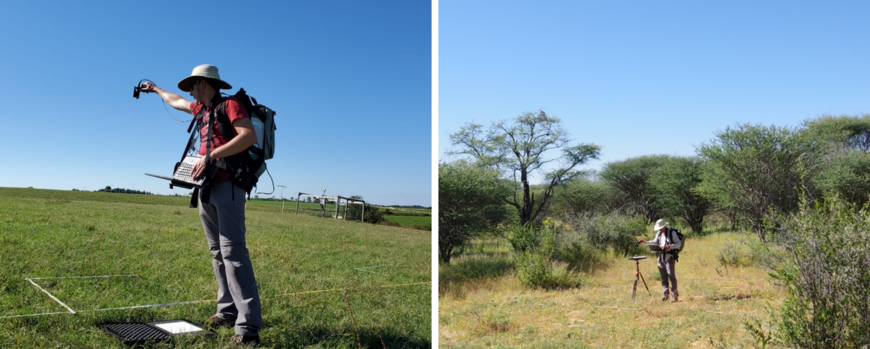A new study led by Florian Männer , a PhD student from our working group, shows how machine learning and field spectroscopy can accurately predict grassland forage quality and quantity across very different climates - from temperate European meadows to Namibia’s dryland rangelands.
Grasslands are an essential source for livestock fodder, yet monitoring their productivity and nutritional value across large, remote areas remains difficult. By measuring plants with specific light sensors and combining this with machine-learning models, the researchers could estimate both forage quality (nutritional energy) and quantity (biomass). Forage quality was easiest to estimate, as plant chemistry influences light reflection in similar ways across regions. The machine-learning model called “Random Forest” proved most accurate, while neural networks transferred best between climates. Adding data from different regions improved model reliability, a key step for applying such tools in Namibia’s highly variable rangelands, where rainfall, vegetation, and management differ greatly between freehold farms with rotational grazing and communal areas managed through shared systems.
Co-funded by the NamTip project, the study highlights how spectral and AI-based methods can advance sustainable rangeland management, helping land users better track forage resources and adapt to changing climates. The full paper, which was published on Ecological Informatics can be found here .

